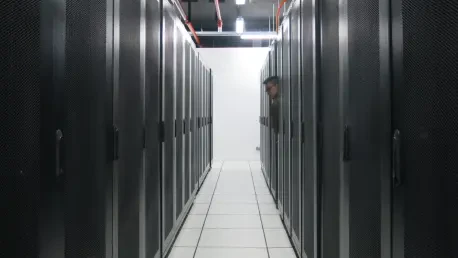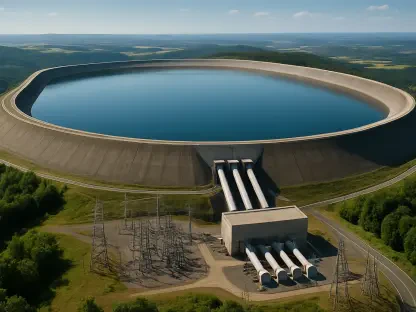Christopher Hailstone is an influential figure in the field of energy management, possessing a profound understanding of both renewable energy technologies and the electricity grid. As our in-house expert on utilities, he sheds light on issues surrounding grid reliability and security, which are crucial as Europe faces shifts in data center geography. As data centers evolve and expand to meet burgeoning AI demands, understanding their geographic and infrastructural needs becomes vital.
Can you explain the current state of data center buildout in Europe and its significance for tech companies?
The buildout of data centers in Europe is largely driven by the increasing demand for robust AI capabilities, which require substantial computing power. Tech companies are desperately seeking locations where they can quickly and efficiently establish data centers to support these needs. This race is happening against a backdrop of intense competition, making it crucial for these companies to secure efficient and reliable infrastructure swiftly.
How do electricity grid constraints affect the location of data centers in Europe?
Electricity grid constraints significantly impact where data centers can be established. In locations where grid connection times are lengthy, developers face bottlenecks that can delay or deter investments. As a result, data center operators are looking for areas where they can access power more rapidly, shifting the investment geography toward countries with more accommodating grid infrastructures.
The report suggests a possible shift in geography for data centers in Europe. What factors are driving this potential shift, and which areas are predicted to become new data center hubs?
The potential shift is primarily driven by the need for quicker grid connectivity. Countries with shorter lead times for connecting to the grid are becoming increasingly attractive to developers. As predicted by the report, as much as 50% of capacity could move away from established hubs like Frankfurt, London, Amsterdam, Paris, and Dublin by 2035, favoring newer markets with more efficient grid policies.
How long does it typically take to connect a new data center to the grid in the main European hubs like Frankfurt, London, Amsterdam, Paris, and Dublin?
In these established hubs, connecting a new data center to the grid can be an arduous process, often taking between 7 to 10 years, with some projects experiencing delays of up to 13 years. This long timeframe creates a significant deterrent for investment compared to newer locations with shorter connection durations.
In contrast to the legacy hubs, how do grid connection times in newer markets like Italy compare?
In newer markets such as Italy, the process is much more streamlined, taking roughly three years to connect a data center to the grid. This shorter timeframe presents an attractive alternative for developers seeking faster project completion and return on investment.
France appears to be an exception regarding data center investment. Why is France expected to maintain continued investment?
France stands out primarily because its grid is relatively unconstrained compared to other legacy hubs. This makes it a more reliable option for continuous data center investment, as developers face fewer delays and challenges in connecting to the power grid.
What economic impacts could countries face as a result of increasing or losing data center investments?
Countries that effectively draw data center investments can expect significant economic benefits, including increased GDP contributions and job creation. Conversely, if these investments shift to alternative countries, existing markets could face economic setbacks, losing out on potential growth and the compounded effects of data center-related activities.
Elisabeth Cremona mentioned grids becoming tools to attract investment. Can you elaborate on this statement? How are grids influencing investment decisions in other industries?
Grids are becoming pivotal in guiding where investments occur, not just for data centers but across all electrifying industries. A well-planned grid with efficient connection times can attract investments, while insufficient infrastructure serves as a deterrent. Industries like manufacturing and technology are also affected, as they increasingly rely on sustainable and consistent power sources.
Looking at the demand forecast, how is data center electricity demand expected to grow in Scandinavia by 2030?
In Scandinavia, countries such as Sweden, Norway, and Denmark are anticipating a threefold increase in data center electricity demand by 2030. This growth highlights the need for robust grid planning to ensure that infrastructure can support this spike in consumption.
For countries like Austria, Greece, Finland, and others, what is the projected increase in data center electricity consumption by 2035?
By 2035, these countries are expected to experience a surge in electricity consumption for data centers, rising to three to five times the levels of 2024. This projected increase demands proactive grid planning and expansion to accommodate future demands.
What are some potential solutions or strategies for improving grid planning in Europe to accommodate future data center growth?
Strategies to improve grid planning should include investment in infrastructure upgrades and increased interconnection capacity. Efficient management practices and increased usage of renewable energy sources can also help meet rising demands while maintaining sustainability goals.
How does this situation in Europe compare to other regions or continents in terms of data center development and grid planning?
While Europe faces significant challenges with its legacy grid infrastructures, other regions such as North America or Asia have their own set of hurdles. In North America, for example, vast geographic areas require different strategies to manage grid connections. Asia, with emerging markets, deals diversely depending on development phases and current infrastructure capabilities.
Do you have any advice for our readers?
Consider the importance of infrastructure in technology investments. Whether you’re a developer, an investor, or someone impacted by these shifts, understanding the evolving landscape of energy and data infrastructure is crucial for making informed decisions and fostering sustainable growth.









